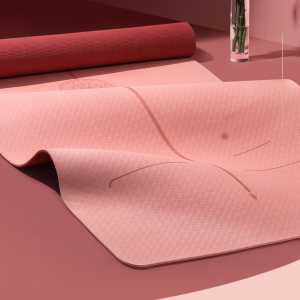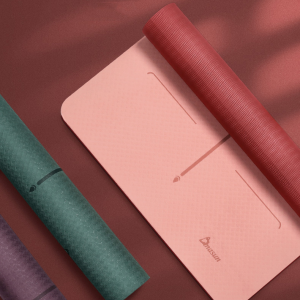The thickness is about 6mm. A cushion that is too thin will feel pain when the joints touch the ground, and too thick will affect the stability of standing movements. (Generally speaking, beginners choose 7MM yoga mats more moderately)
Observe the elasticity of the yoga mat. Squeeze the yoga mat with your hands, if you feel that your fingers are easy to pinch together, it proves that the yoga mat is too soft. Even if the yoga mat is thicker, the joints such as the knees will be painful when they touch the ground. If the yoga mat is too hard, it is not very good. Our fragile skin cannot accept it, and it breaks easily and is not easy to store. Be sure to choose a yoga mat with good flexibility and moderate hardness to match your practice.
The uniformity of the yoga mat. Lay the yoga mat flat and observe the uniformity of its foaming. If the foaming surface is uneven, it is easy to be damaged during use. If the foamed protrusion is damaged, it cannot be repaired.
Moderate in severity. Because yoga mats often need to be carried with us, try not to choose too heavy mats for easy carrying.
The anti-slip of the cushion surface, the cushion is flat, press the cushion with the palm of the hand and then push forward. If the cushion slides on the ground or the hand slides on the surface of the cushion, it indicates that the anti-slip of the cushion is not very good. Unnecessary injuries may occur during the exercise, such mats should be used with caution.













